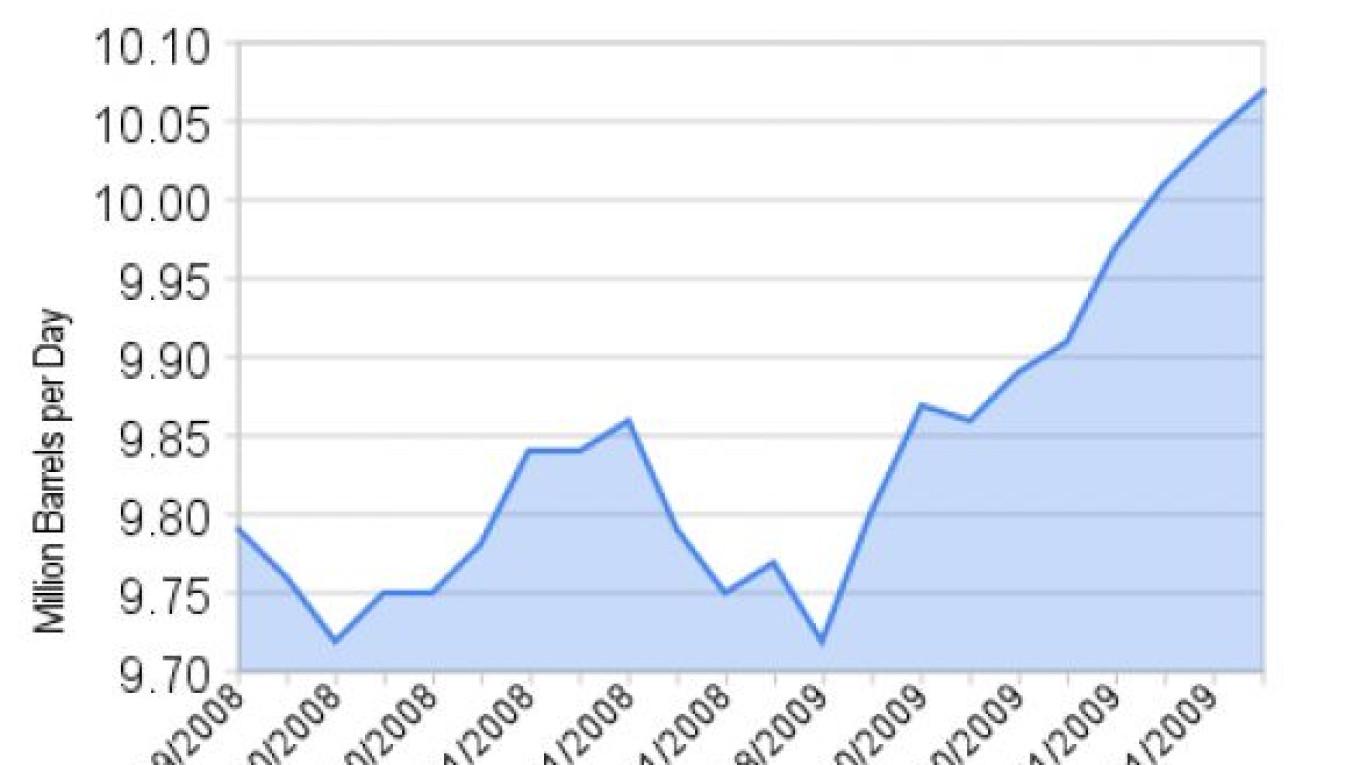Russia set a fourth consecutive monthly record for crude oil output in November to retain a position ahead of Saudi Arabia as the world’s largest producer and the only country pumping more than 10 million barrels per day.
The country produced 10.07 million bpd in November, the third straight month that output has topped 10 million bpd, as more crude emerged from the new Arctic field run by state-controlled sector leader Rosneft, Energy Ministry data showed.
“The core drivers were the greenfield sites,” said Viktor Mishnyakov, senior oil and gas analyst at UralSib.
Russia’s oil-reliant economy is showing signs of recovery from its first recession in a decade as crude prices have more than doubled from December-2008 lows and the Kremlin has grabbed some of the market share freed up by OPEC output cuts.
Worried about stagnating output in its oil heartland of western Siberia, Russia has begun to ease its tax regime to encourage the industry to invest the billions of dollars necessary to develop virgin fields further east.
Rosneft’s Vankor field, launched in August, was the key driver of November production growth, the ministry data showed.
Rosneft produced 2.42 million bpd in November, up 0.3 percent from the previous month and equivalent to nearly a quarter of Russia’s total production. It was the only producer among Russia’s top five to boost production in November.
LUKoil and TNK-BP, its two closest peers, each recorded a small drop in November output despite having launched major new fields in the last year.
Analysts have questioned whether Russia will be able to sustain output growth after the latest group of new fields hits a plateau, as there are few other projects in the pipeline.
“The question is: Will the decline at underinvested brownfield sites accelerate to the extent that it outweighs any growth in greenfields?” Mishnyakov said.
Russia has emerged as the undisputed leader in world oil production after the Organization of the Petroleum Exporting Countries agreed to cut supply by 4.2 million bpd from September 2008 in a bid to prop up falling prices.
Saudi Arabia, historically the leading producer, has restricted output in line with OPEC output cuts and pumped about 8.13 million bpd in November.
Though the Saudi figure excludes a type of light oil known as condensate, which is included in the Russian total, output in Russia is still much higher.
The Energy Ministry, in a plan unveiled last week, envisages oil output rising to between 530 million and 535 million metric tons by 2030 from 487.6 million metric tons last year.
But this is contingent on east Siberian fields, which contributed only 3 percent of Russia’s oil production last year, growing their share to 18 percent to 19 percent over the next two decades.
The country, as the world’s largest producer of natural gas, boosted output by more than 9 percent month on month in November. Daily gas output rose to 1.93 billion cubic meters from 1.76 bcm in October.
A Message from The Moscow Times:
Dear readers,
We are facing unprecedented challenges. Russia's Prosecutor General's Office has designated The Moscow Times as an "undesirable" organization, criminalizing our work and putting our staff at risk of prosecution. This follows our earlier unjust labeling as a "foreign agent."
These actions are direct attempts to silence independent journalism in Russia. The authorities claim our work "discredits the decisions of the Russian leadership." We see things differently: we strive to provide accurate, unbiased reporting on Russia.
We, the journalists of The Moscow Times, refuse to be silenced. But to continue our work, we need your help.
Your support, no matter how small, makes a world of difference. If you can, please support us monthly starting from just $2. It's quick to set up, and every contribution makes a significant impact.
By supporting The Moscow Times, you're defending open, independent journalism in the face of repression. Thank you for standing with us.
Remind me later.


